Joni Mitchell described it as ‘fly fishing’ and Jeff Beck was a master of the craft – learn how to use volume swells like guitar legends Eddie Van Halen, Allan Holdsworth and Larry Carlton
Volume down, pick, volume up... violining offers loads of potential as this lesson proves

The guitar is a versatile and dynamic instrument capable of many different sounds via a wide variety of techniques. One particularly expressive technique is violining, or volume swells, which allows the player to fade into chords or single notes, altering the attack and release. This is achieved by fading in and out with the guitar's volume knob or a volume pedal.
Some of the biggest names in guitar have used volume swells to great effect, including Eddie Van Halen, Roy Buchanan, Jeff Beck, Michael Landau, Steve Lukather, Ty Tabor, Allan Holdsworth, Steve Morse, David Gilmour, Larry Carlton, Gary Moore, and Yngwie Malmsteen.
The basic approach is to have the guitar's volume control at zero, play and sustain a note or chord, then roll up the volume control. This will then allow your playing to be heard. While other picking hand fingers can be used, the fourth finger is the most common to execute volume swells, not least because it's the closest to the volume control. See the two photos below of a volume swell being executed by the fourth finger.
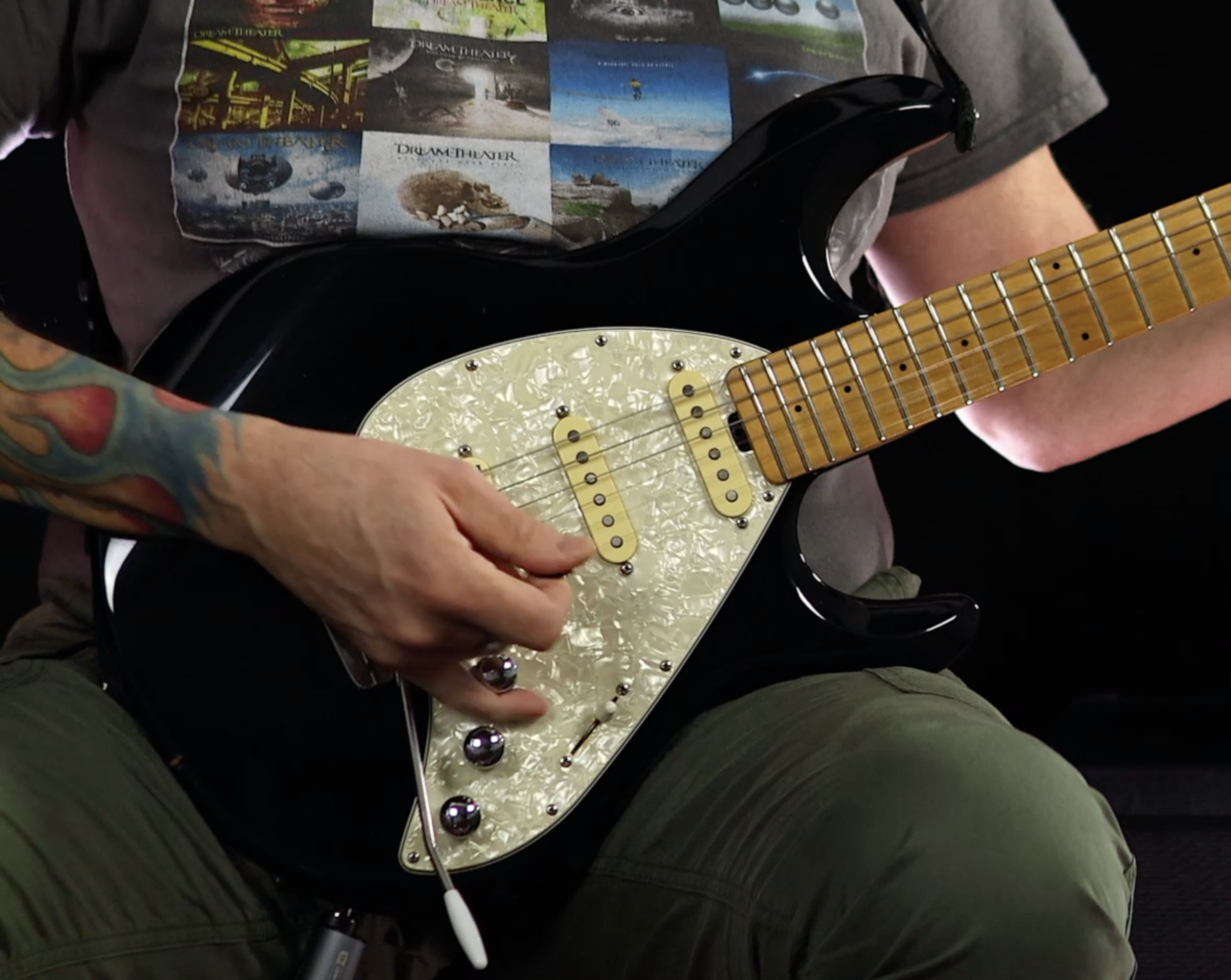
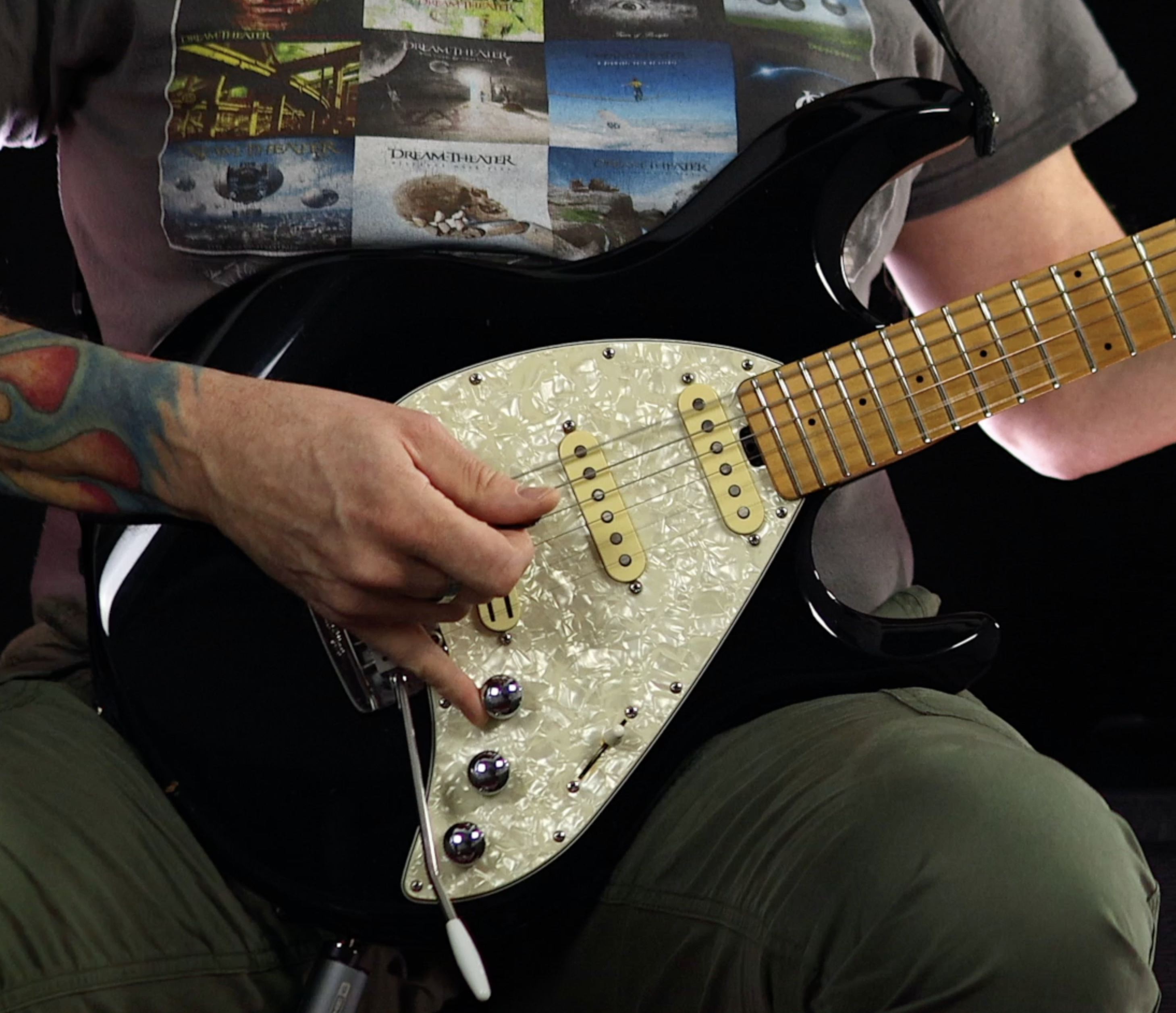
Here are two photos of a volume pedal being used, heel down to begin a swell then toe fully down to allow the guitar's full volume through.
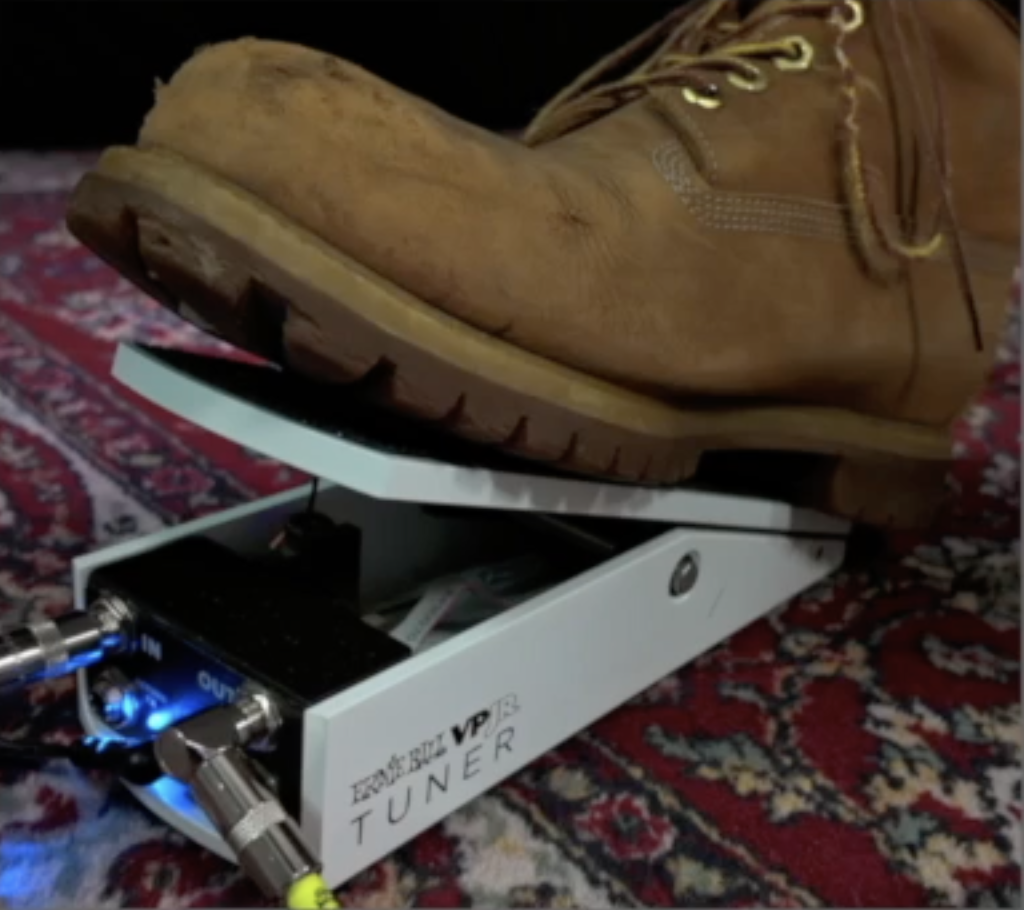
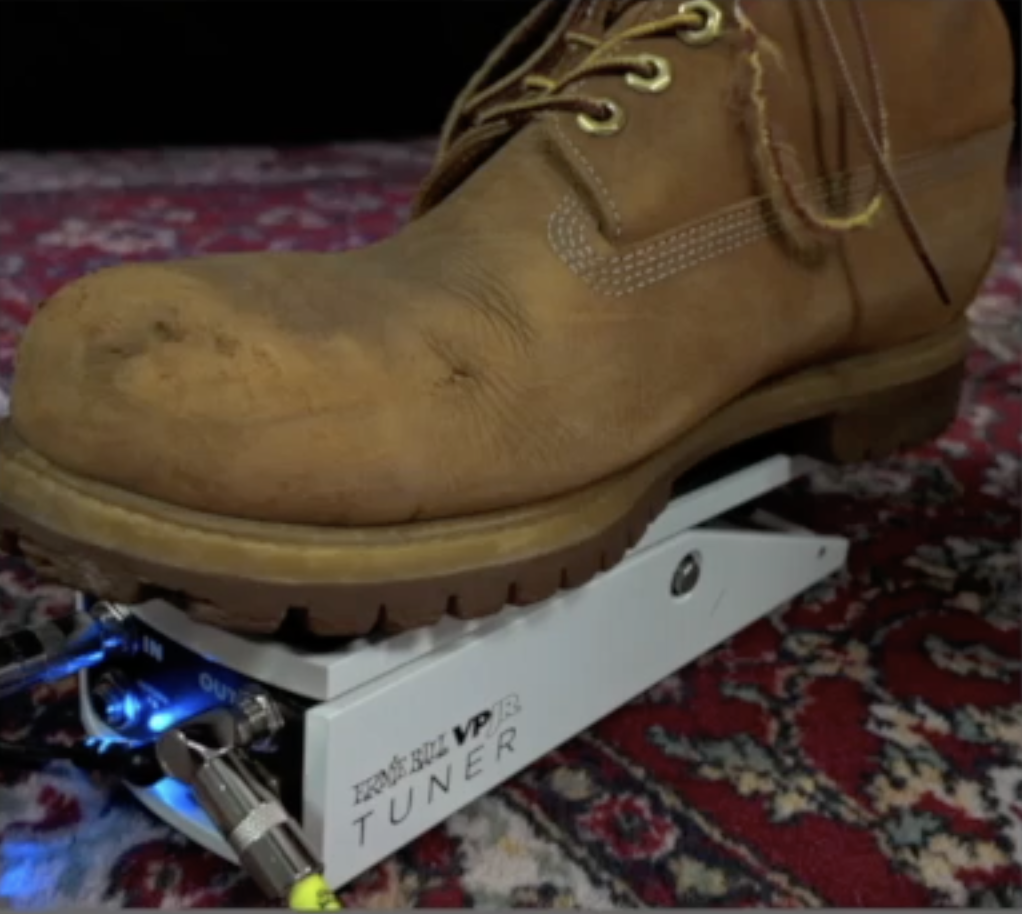
By eliminating the initial attack, notes and/or chords can sound more like a keyboard pad or an emotive orchestral string section. The attack and release achieved with the volume control can produce different effects, with long and atmospheric sounds, especially when using delay and reverb, or short and almost gated sounds. The gated approach can yield interesting effects when embellished with a rhythmic delay.
Great examples of this are Cathedral by Van Halen, and Black Star by Yngwie Malmsteen. Now onto the examples...
Tab examples
Example 1. Chord volume swells
This example introduces the technique of violining. For this exercise you shall play a single E major chord and allow it to sustain for a full bar. As you strum the chord, extend your fourth finger to operate the volume control to swell the chord in. Look again at the guitar photos above if you get stuck.
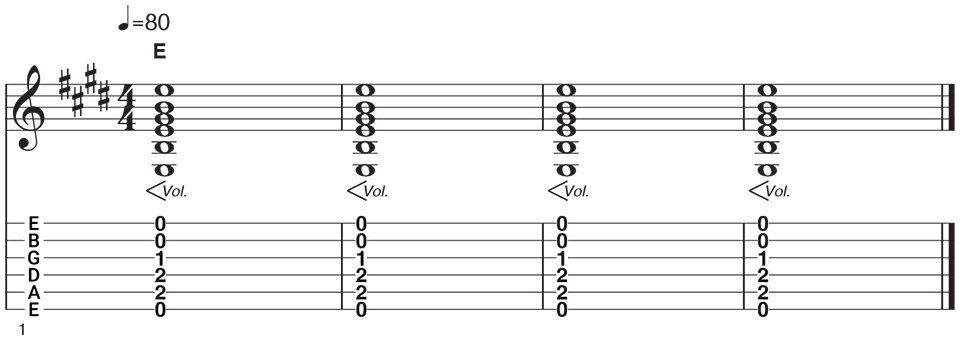
Example 2. Chord progression volume swells
In this example the concept is taken further by playing a full chord progression with violining. This example illustrates how you can use the technique to give your progressions an orchestral string-like feel. Both major and minor chords feature as well as 1st inversions (the 3rd of the chord is the lowest note) to provide smooth transition between the chords. Once again, use your fourth finger to control the volume knob on your guitar, fading in the chord directly after the strum.
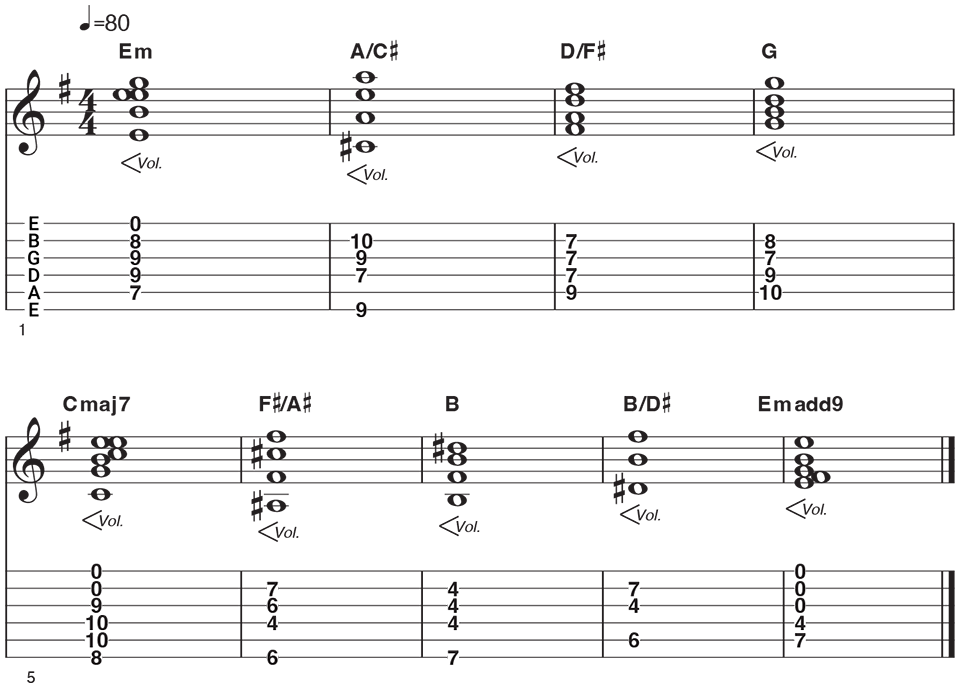
Example 3. Sophisticated chords with volume swells
Here's another approach when violining, using chord clusters constructed from notes of the scale the progression is in. This concept is similar to how Steve Morse or Allan Holdsworth would approach chord construction. A volume pedal is used here instead of the guitar's volume control, as there are more chord shapes to tackle and there are fade outs too. Add a healthy dose of delay and reverb for an ethereal synth pad-like sound.
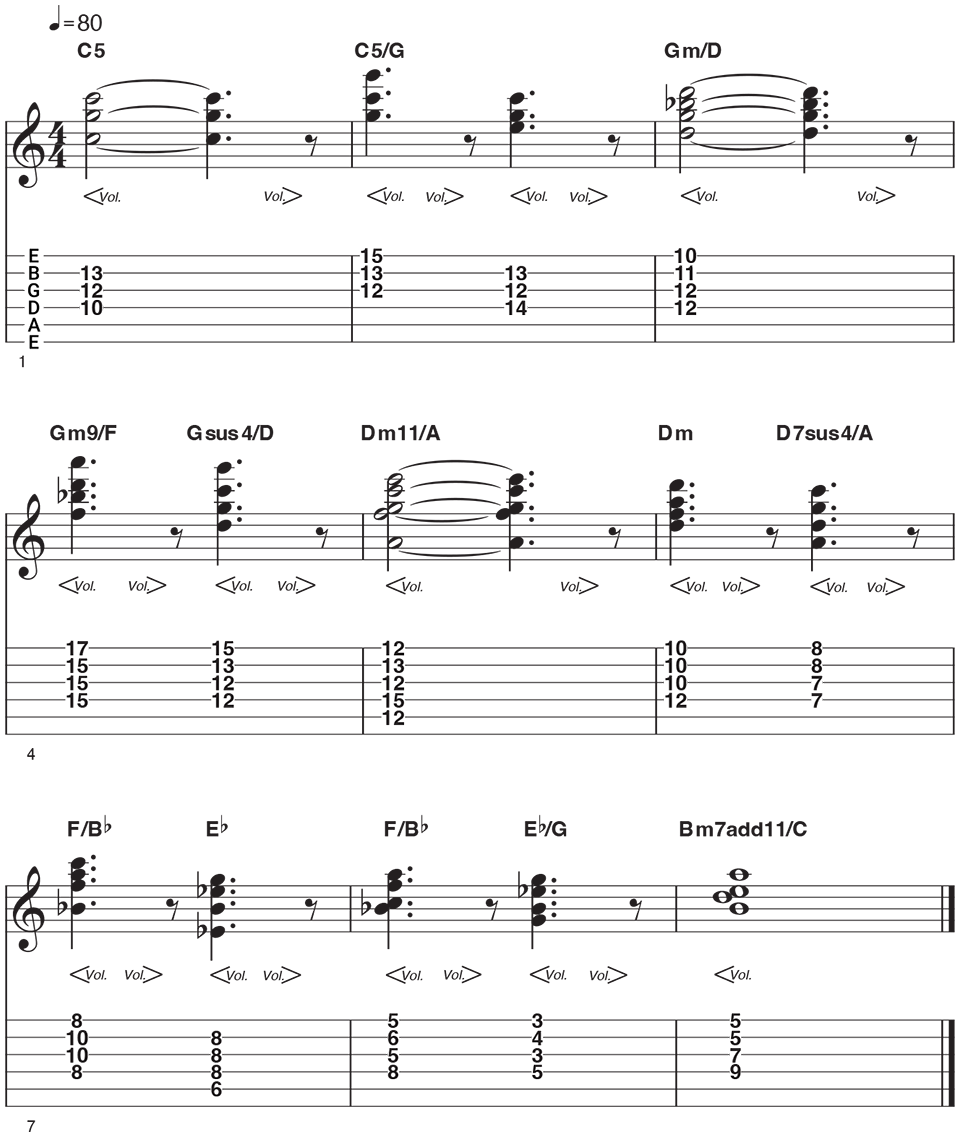
Example 4. Clipped chords with volume manipulation
Here you'll experiment with a faster attack and release with the volume control, achieving a gated effect. This example has a vintage “Prog” feel. It's important to use a delay to get the full big ambient effect. Set the delay to an eighth note repeat at the track's tempo of 80bpm as this will allow the delay to sound as you re-finger between chord strikes. You can also try this technique with lead guitar phrasing.
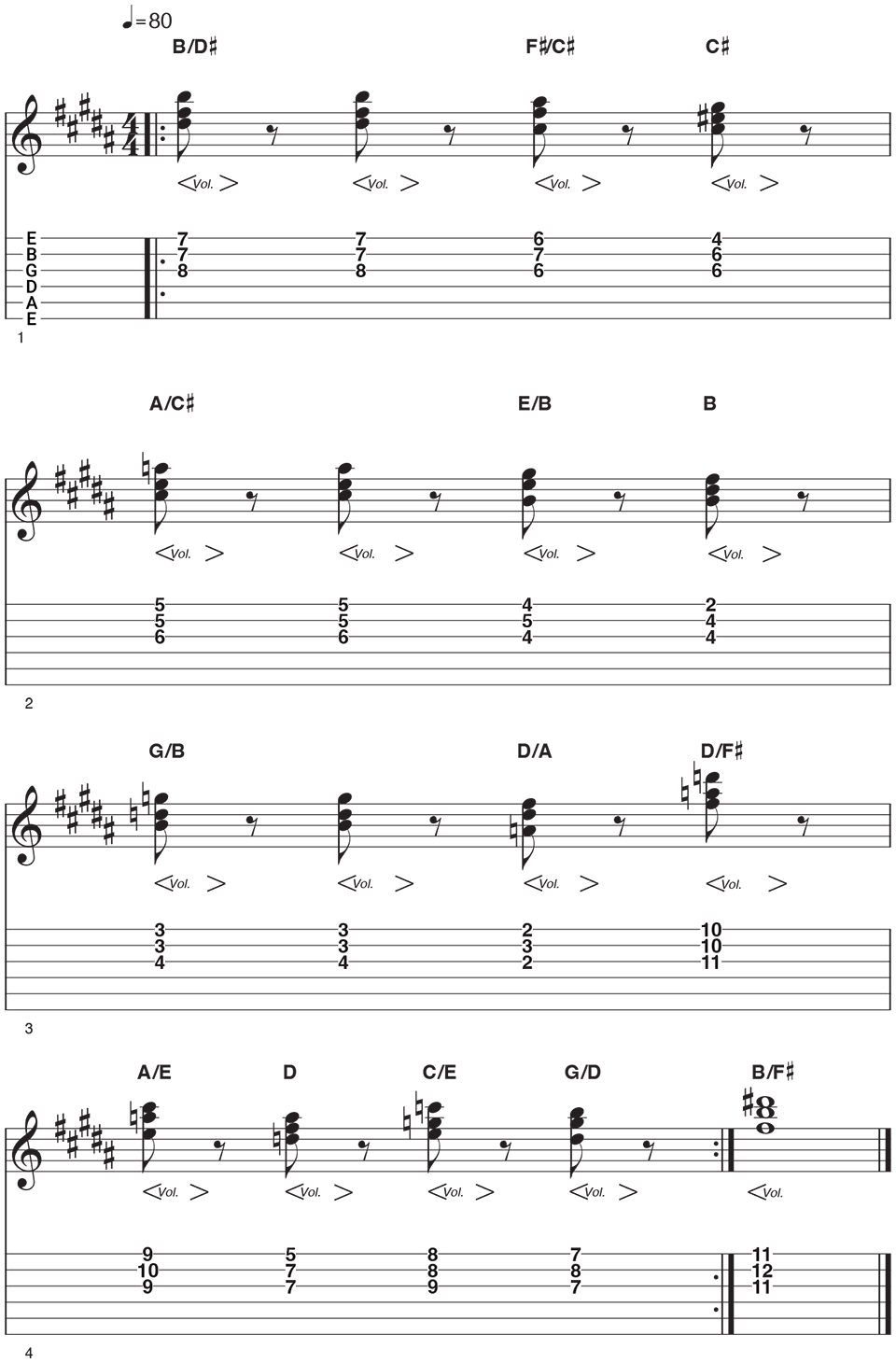
Example 5. Single notes solo with volume swells
This demonstrates how you can use volume swells with lead guitar playing. It has long sustaining swells, and short gated swells, which work great when playing a run or scale based line. It is based around the E Aeolian/E natural minor scale (E-F#-G-A-B-C-D), and should be embellished with delay and reverb. Be sure to set the delay to the tempo of 80bpm to get the same results.
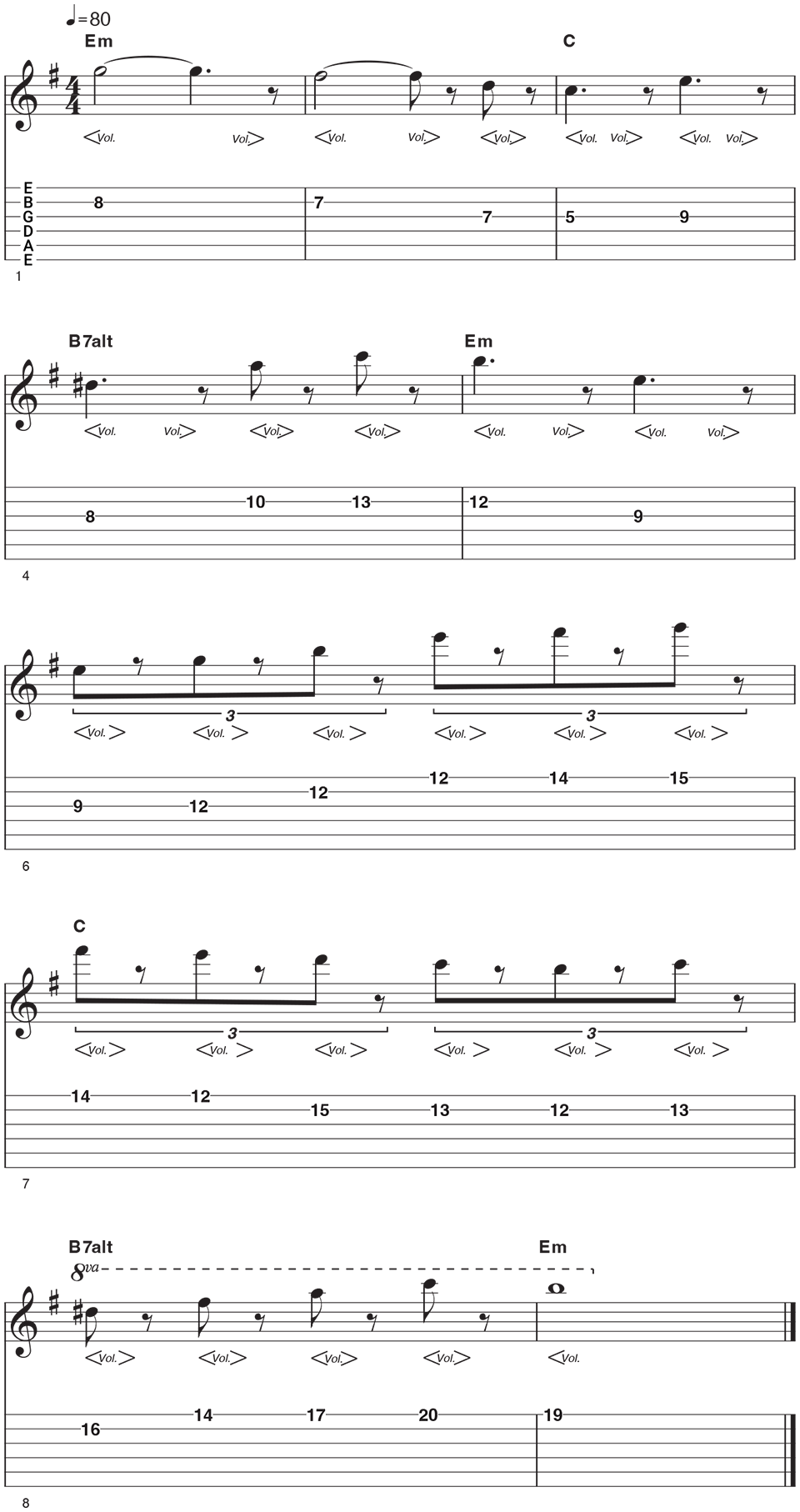
Example 6. Multiple approaches with volume swells
Here all of the approaches are combined to create a short mini piece. Based in the key of E minor, the example kicks in with volume swelled full and cluster voiced chords. For the solo section, long sustaining lines are played with brisk fade ins and outs. Notice that there are some fretting hand slurs and an emotive pre-bend. Be sure to make use of delay and spacious reverb for an ambient vibe.
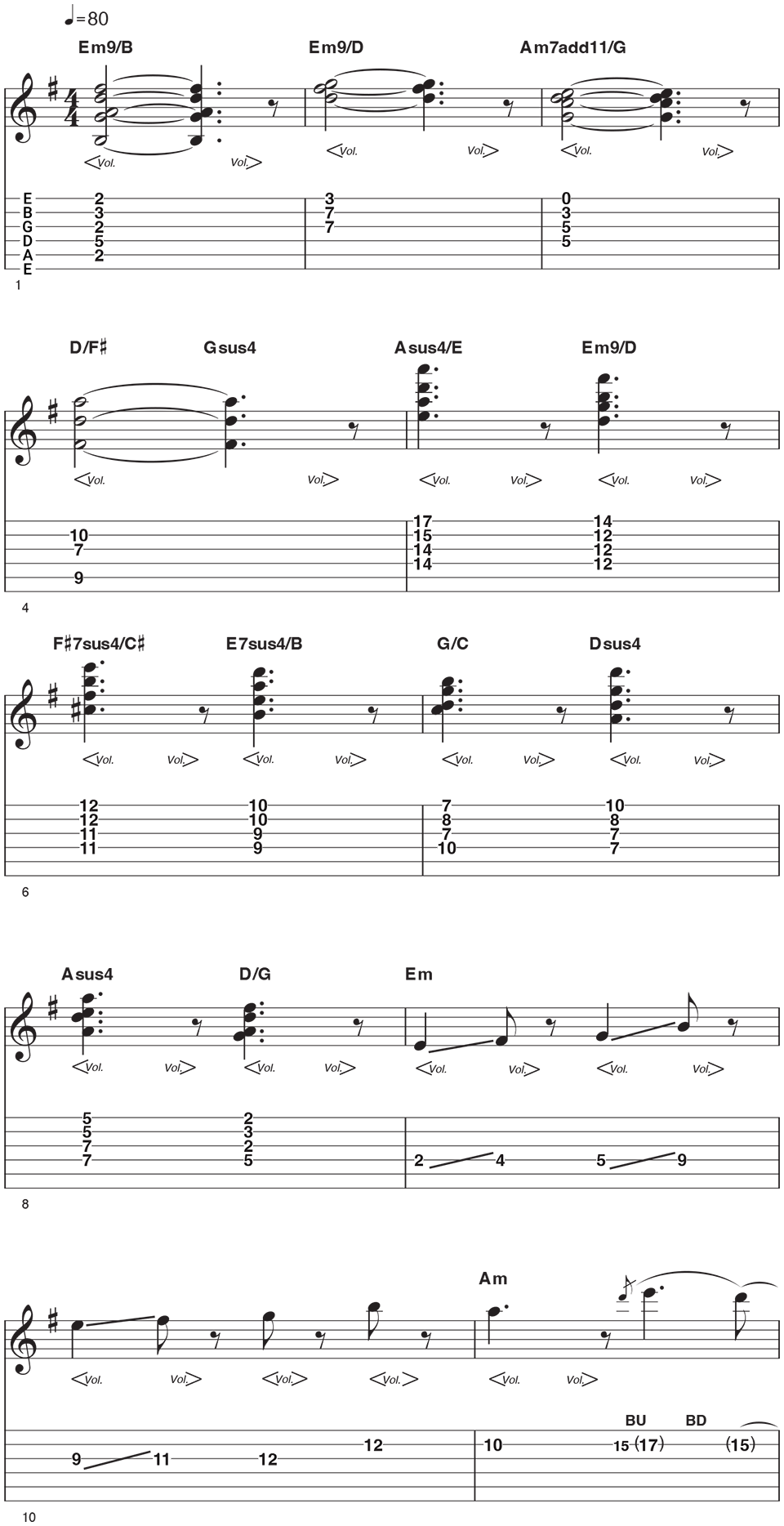
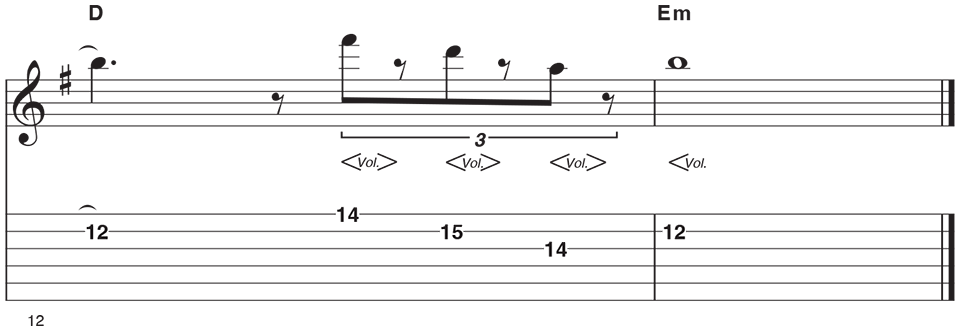
Examples of volume swells
Allan Holdsworth - Above And Below
Allan Holdsworth was a master guitarist and for many he is the ultimate guitarist's guitarist. Aside from his astonishing lead technique which glistened with stunning legato passages and bewildering note choices, Holdsworth had an incredible approach to chords and harmony. This track highlights Holdsworth's use of volume pedal violining with an unmatched approach to constructing chords, performed with a lush delay.
Van Halen - Cathedral
This instrumental by the late guitar legend Eddie Van Halen highlights the gated approach whilst using echo for dynamic rhythmic repeats. Van Halen performed the piece with fretting hand hammer-ons, whilst quickly fading in and out the notes using his guitar's volume control. This is a unique and creative applicate of the violining technique.
Larry Carlton - Emotions Wound Us So
The LA session guitarist has played with many legends from Joni Mitchell (whose fly fishing quote references him) to Steely Dan, Michael Jackson to Barbara Streisand. He's had a long running solo career with stunning instrumentals such as this. Watch how he plays the intro with his gorgeous string bending technique. At 0:18, the artificial harmonics are swelled in with a volume pedal (he's always been more a pedal than guitar knob user) with more harmonic stunners at 0:40.
Jeff Beck - Where Were You
This track is one of the most beautiful pieces of guitar playing ever recorded and often raved about by other legends, from Joe Satriani to Steve Lukather. Jeff Beck's violining technique was sublime and he used it on many of his instrumentals. Here, Beck embellishes the haunting harmonics infused melody with whammy bar bends and smooth volume swells, giving the guitar a vocal-like quality.
Kings X - The Burning Down
Guitarist Ty Tabor is revered for his unique tone and playing style. From the band's album Gretchen Goes To Nebraska, this features an ethereal outro solo where Tabor uses the volume control for long atmospheric phrases, as well as short gated/rhythmic phrases with the delay.
Incubus - Pardon Me
Incubus guitarist Mike Einziger is a very creative and dynamic guitarist, utilizing effects with a variety of different playing techniques to get rich soundscapes. This track is a great example of how he uses volume swells to perform the atmospheric verse chord progression.
Get The Pick Newsletter
All the latest guitar news, interviews, lessons, reviews, deals and more, direct to your inbox!
Jamie Humphries is an English guitarist based in Sweden. He has toured and performed with artists such as Brian May, Queen, Jeff Beck and Henry Rollins, as well as performing across Europe for We Will Rock You and in America with the Australian Pink Floyd Show. He was a longtime contributor to Guitar Techniques magazine and contributes lessons for Gibson. He runs his own studio in Stockholm where he produces Youtube content for Six String Alliance and Produce Like A Pro. He is a Music Man and Mesa/Boogie endorsee.
- Jason SidwellTechniques Editor – GuitarWorld.com, GuitarPlayer and MusicRadar.com
You must confirm your public display name before commenting
Please logout and then login again, you will then be prompted to enter your display name.




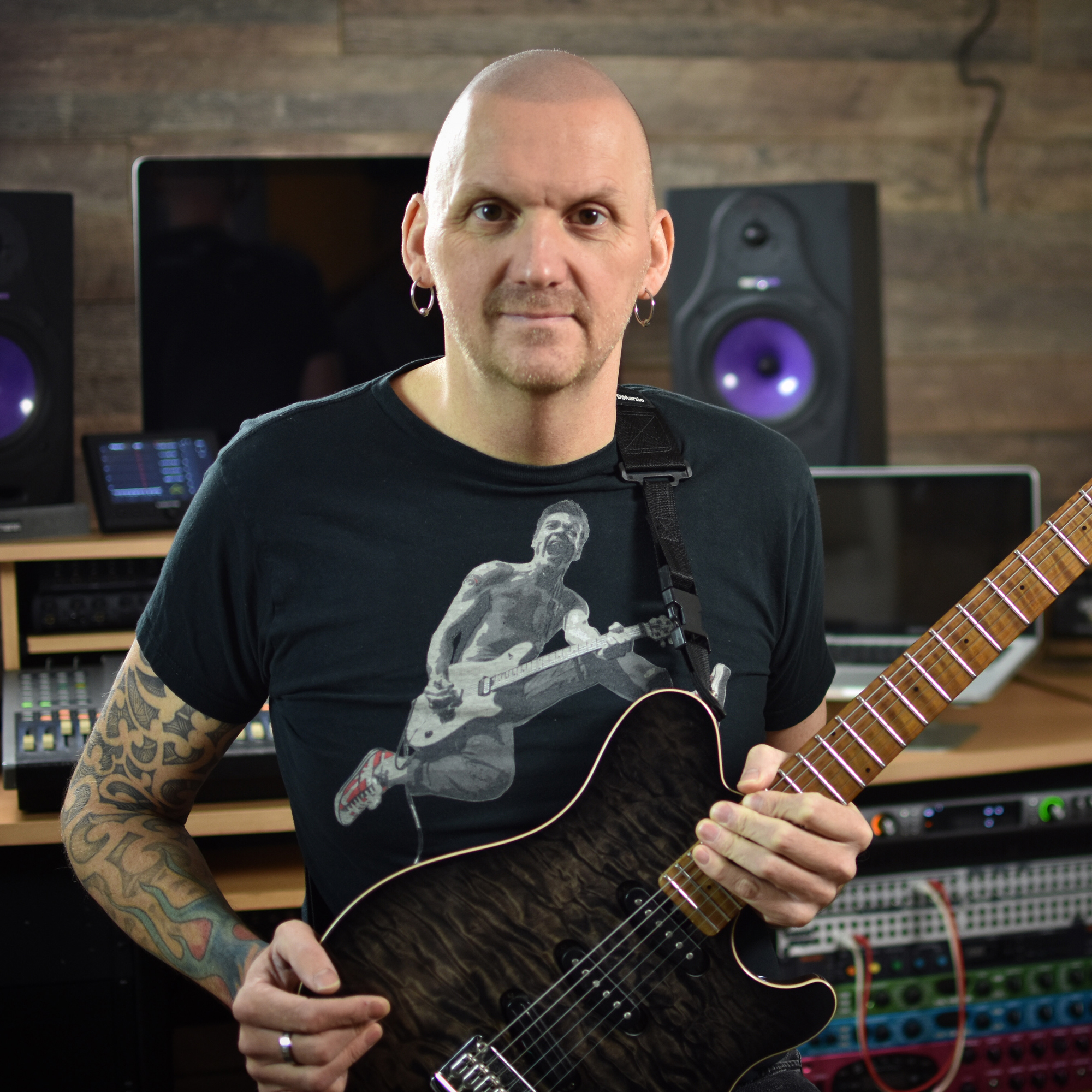

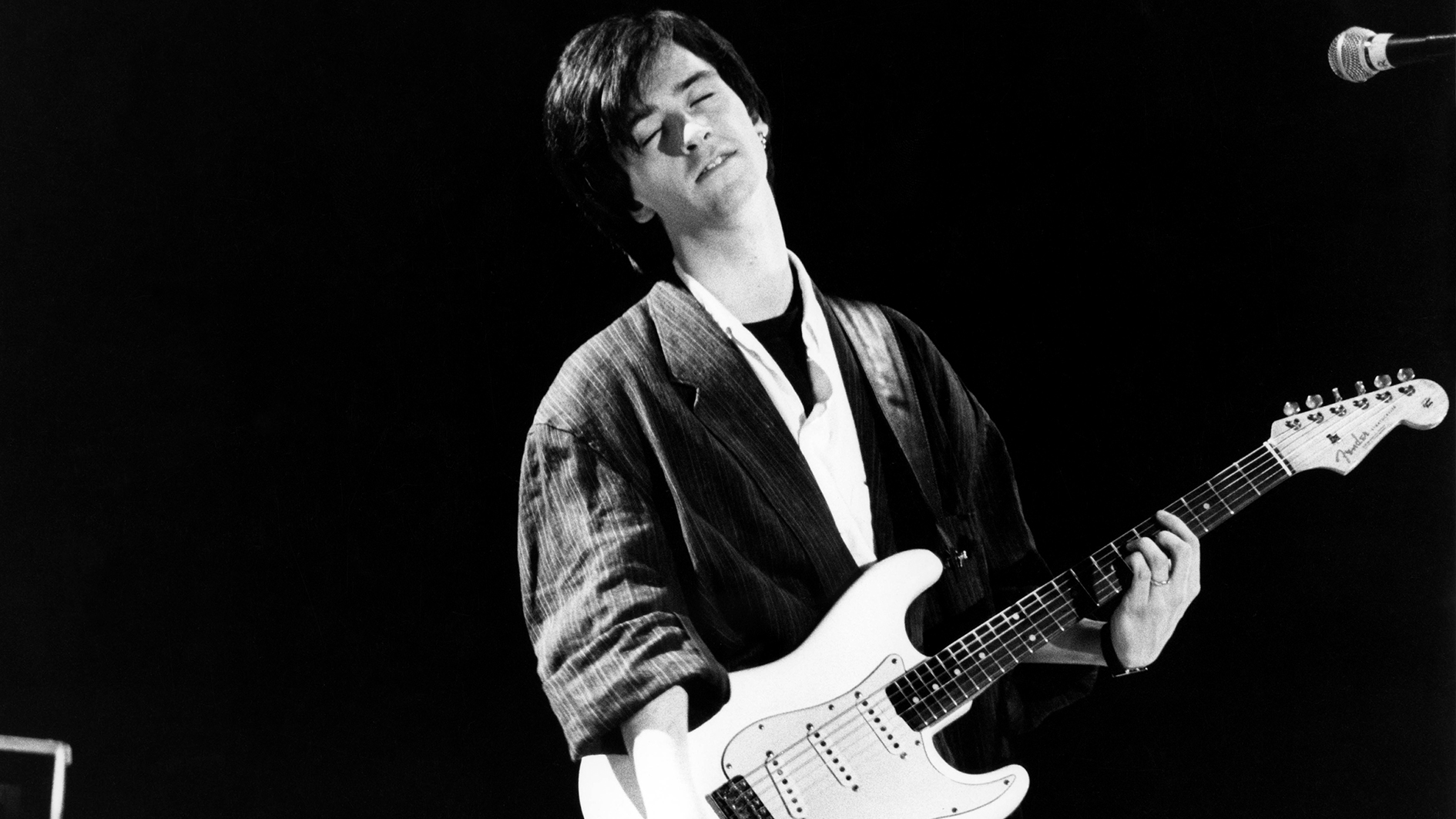


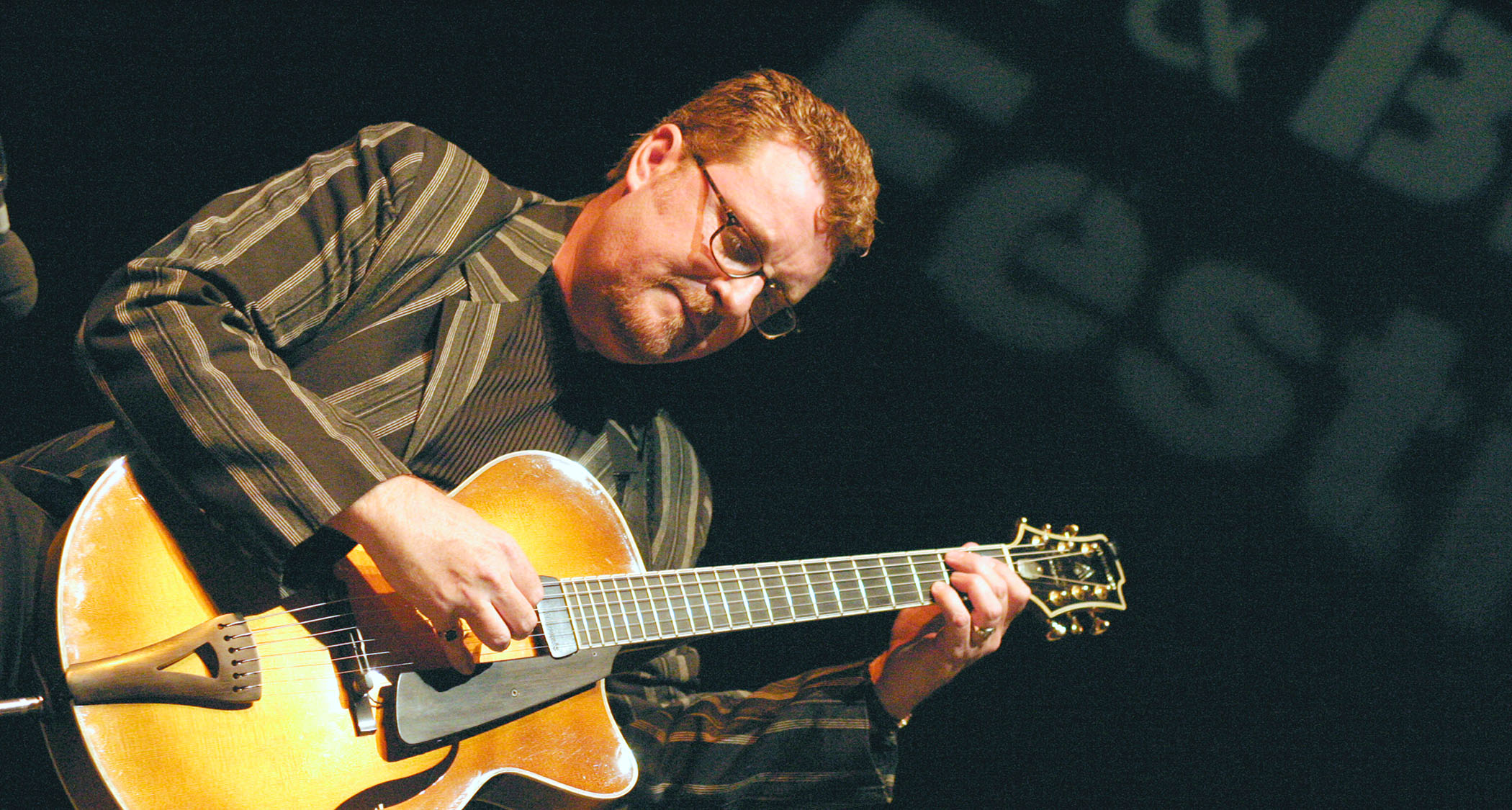
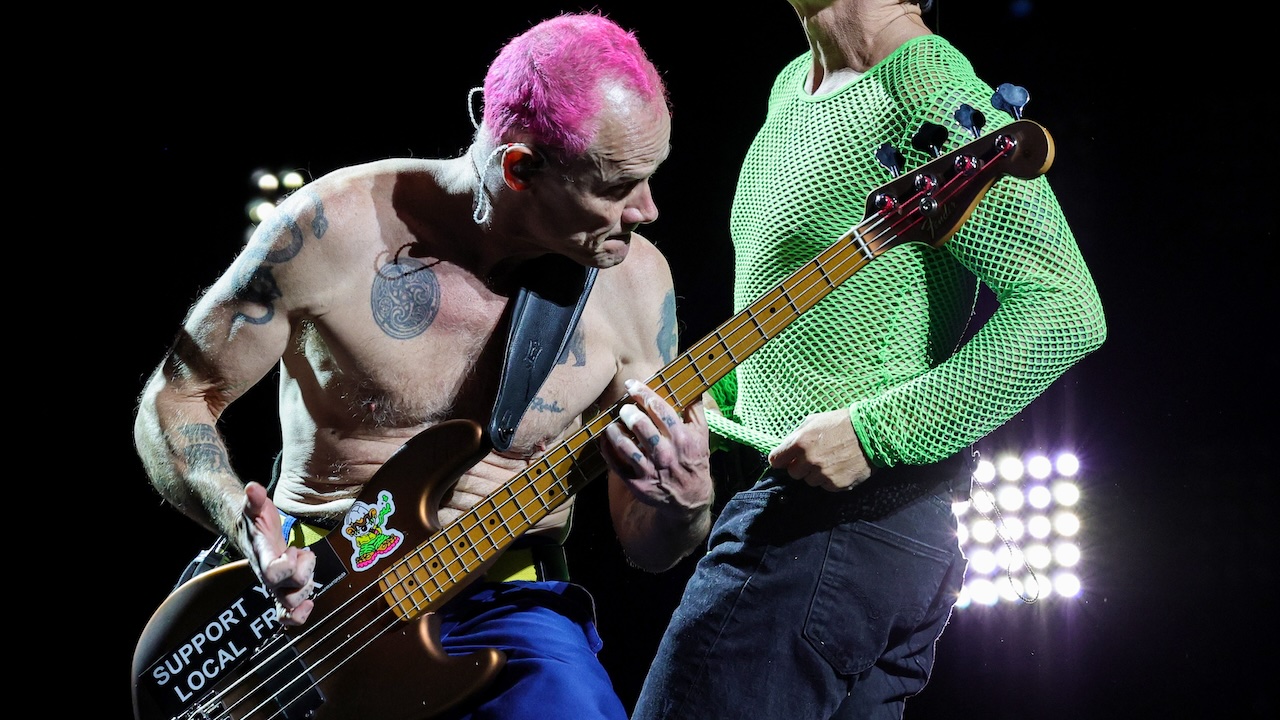

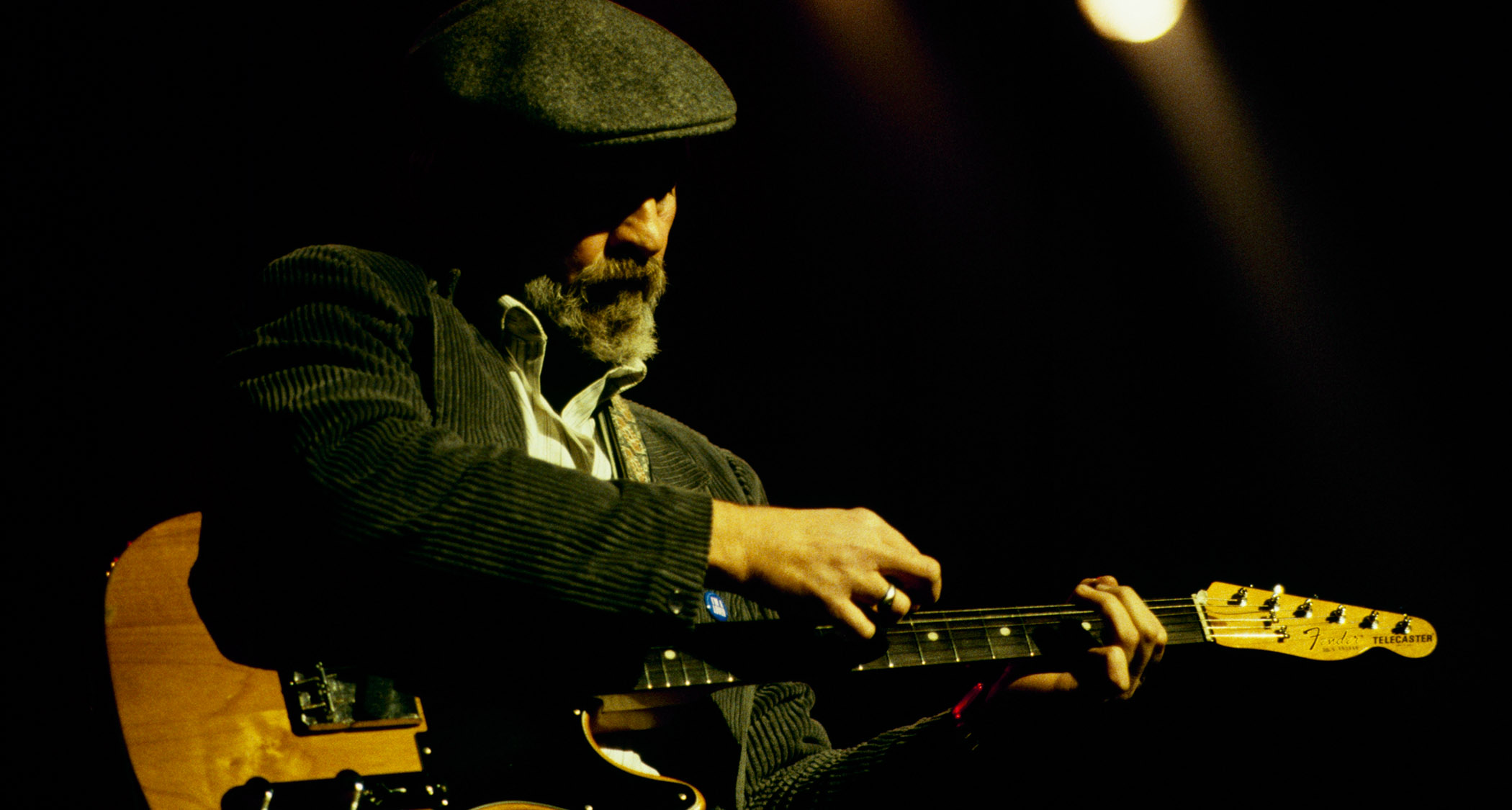
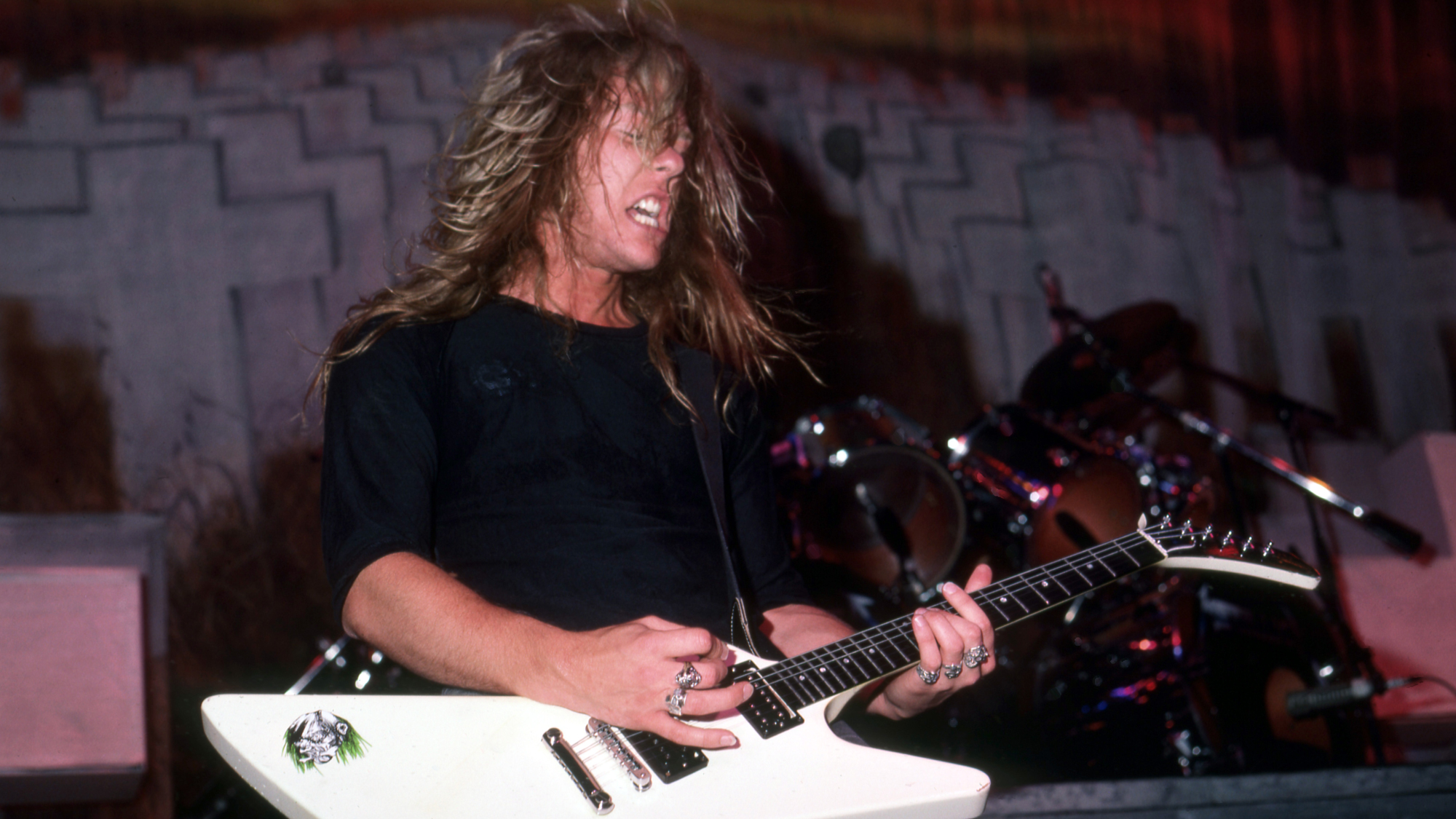
![Joe Bonamassa [left] wears a deep blue suit and polka-dotted shirt and plays his green refin Strat; the late Irish blues legend Rory Gallagher [right] screams and inflicts some punishment on his heavily worn number one Stratocaster.](https://cdn.mos.cms.futurecdn.net/cw28h7UBcTVfTLs7p7eiLe.jpg)
